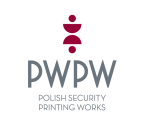| Printing techniques | |
| (08-05-2015) |
PWPW has its own machine park with state-of-the-art machines and equipment enabling the use of various printing techniques. Thanks to a combination of several printing techniques in one product PWPW may produce many security features in graphic design that are difficult to copy or reproduce.
PWPW uses the following printing techniques:
- Steel engraving – intaglio printing technique used by the producers of highly secured prints. Steel engraving is employed to produce such security elements as latent image effect, palpable security elements, optically variable graphic security elements or dry pressing.
- Letterpress printing – relief printing technique used, for example, for numbering prints. The numbering process may also employ special inks, for example, UV active inks or IR visible/invisible inks.
- Rotogravure – a technique resulting in high colour saturation. It offers high durability of the print and is used in production of high volume prints of high class, for example, postage stamps.
- Screen printing – a technique used for, among others, printing elements made with special inks, for example, optically variable inks (OVI), or metallic, iridescent or thermochromic security features.
- Offset – a type of lithography (planographic printing) used for iris printing (a gradual change of colour within one line), printing with special inks (for example, UV active inks, inks non-resistant to abrasion, chemically non-resistant or up-converter).
- Letterset printing - printing technique also known as dry offset. It is a combination of letterpress and offset techniques. This technique employs, among others, reactive inks used as one of security features or recto-verso.






